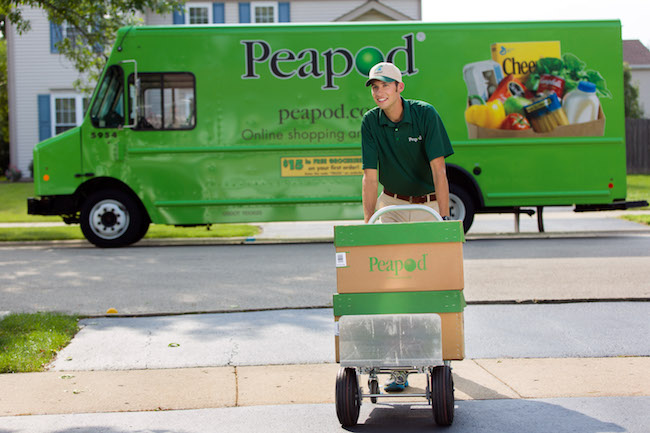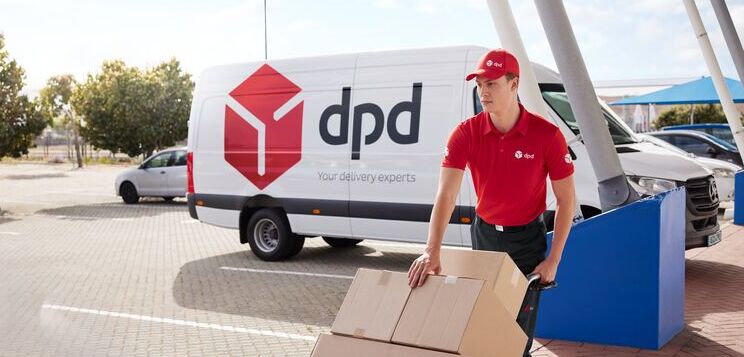How Peapod Drives Supply Chain Innovation and Efficiency With AIMMS
![]() It’s an exciting era for the retail industry as companies continue to focus on creating and providing a great experience for their customers while driving innovation and market share. There’s no doubt that the role of data, technology, and analytics in retail decision-making is growing and this trend will further heat over the next few years.
It’s an exciting era for the retail industry as companies continue to focus on creating and providing a great experience for their customers while driving innovation and market share. There’s no doubt that the role of data, technology, and analytics in retail decision-making is growing and this trend will further heat over the next few years.
We spoke with Daniël van Gool, Director of Supply Chain Development at Peapod, a leading U.S. online grocer who serves the East Coast and Mid-West, to hear about how he views the role of analytics and technology in driving supply chain innovation at his company.
1. Daniël, can you tell me about your role at Peapod?
I’m the Director of Supply Chain Development. My team and I work on developing and furthering our supply chain and operations by providing a centralized analytical perspective – we work on improving fulfillment models, applying analytics, improving productivity and output at our warehouses, and optimizing our operations.
I joined Peapod from our parent company, Ahold Delhaize, in the Netherlands. My total tenure with Ahold Delhaize has been over 20 years. Fourteen of those years I’ve focused on grocery e-commerce. I came over to Peapod to share some of the learnings from the Dutch Ahold Delhaize grocery delivery business, as well as best practices around warehouse fulfillment models and leveraging concepts such as analytics and optimization.
My goal is to build a Supply Chain Center of Excellence here at Peapod that holds the expertise to leverage prescriptive analytics, utilize optimization tools, manage tactical control and parameters, and drive forecasting throughout the business. Our goal with this is to improve our overall supply chain intelligence and our output. I try to summarize it by saying we are helping Peapod work smarter, not harder.
2. You are currently using AIMMS for Warehouse Slotting Optimization. How did this initiative begin? What were the main drivers?
Slotting is about product placement and ensuring we have an operation that is as efficient as possible. Peapod has a large number of what we call warerooms – small fulfillment locations attached to Ahold Delhaize grocery stores that are used to serve online grocery customers, while also leveraging the store’s inventory. Items can be picked from the wareroom itself, or if needed, from the store.
The fastest moving items need to be located in the wareroom. Those picks are much more efficient than store picks and less disruptive to customers. Slower moving items can be picked from the store, which has a broader selection of items. Overall, we want to minimize the number of picks and time spent in the store vs. what we pick in warerooms that are smaller and carry items just for our delivery customers. It’s a balance between the two.
A lot of considerations, such as seasonal changes, new product introductions, discontinued products, and so on play into the decision of where to place an item. It’s a lot to keep track of if done manually every week, and complex to do without the right tools or support, so wareroom slotting was a good candidate for automated optimization.
3. What was your software selection process like?
Our supply chain consultant, Districon, an AIMMS partner, suggested that slotting, especially in that wareroom setting, would benefit from using optimization technology. We looked at the different options available in the market. There were two categories of off-the-shelf solutions:
- Warehouse slotting tools work well for palletized warehouses, or each-pick environments with standardized layouts, but would not work well for our warerooms, which look more like a store with items placed directly on grocery shelves.
- The other option, store planogramming software, includes diagrams that show how and where specific items should be placed on shelves but are not designed to optimize operational efficiency or incorporate the operational rules and restrictions in the way we would like
Neither of those standard solutions deals with having a store-like warehouse that shares inventory with a store. What we wanted was the best of both worlds. So, after a very thorough market review, we decided that Districon’s proposal to create a custom solution with AIMMS Optimization Tooling would be the best solution for us.
4. How were you doing slotting before?
The process was fairly manual and decisions were not centrally made. It was decentralized at each wareroom. We’re replacing it with a more automated, optimized process that provides a list of items to move every week, including a planogram visual.
5. How have things changed for the individuals in the wareroom?
The wareroom team no longer needs to dive into various reports such as last year’s seasonality numbers, and manually look up individual item sales history. The new tool, called Podslotter, provides a visual diagram that indicates exactly what goes where in the wareroom and how the items should look on the shelf such as the number of facings, whether items should be stacked or not, etc.
The math that determines which items to move happens behind the scenes and is fully automated. The tool also ensures fast-moving items are slotted at ideal grabbing height, minimizing reaching or crouching. Overall, we think it makes it much easier for wareroom employees, and they are left with time to focus on the customer.
6. What if someone in the wareroom has a question or problem with the slotting output?
One thing I felt very strongly about is the inclusion of a feedback module in the tool. This allows the wareroom users to go in and give us feedback on specific moves – for example, if the item does not fit in that location. That feeds into an inbox that my team can look at every day and process. It’s important feedback for us.
Often either the item or shelf data is incorrect, or if it’s an individual’s opinion, we can explain what the rationale behind it is and have a discussion. This helps us improve the models further.
7. How is implementation going?
We learned that the rollout process is not just about the tool, it’s also about getting people committed to using the tool and working according to the processes which is needed to make slotting optimization successful.
We’re still in the process of rolling out the solution to all warerooms. We created a presentation to explain how the new slotting process works. We are also working closely with our operations support team to roll this out. They’re on the ground doing training, working on the first slotting output, answering questions, and helping with the transition. We work together to troubleshoot and tackle any issues.
8. What are the results so far?
It’s still pretty early but based on our pilots, there are a few things that we can definitively say. Podslotter has driven:
- 20% reduction in out-of-stock occurrences
- 6% increase in units picked from the wareroom vs. the store – this is huge. It’s a big productivity improvement for us.
- 4.5% increase in units picked from the ideal height (vs. having to reach or crouch)
We built 2 ways to do slotting–Greenfield, which started from scratch, and Brownfield which suggests swaps between the store and the wareroom. In our existing warerooms, we use brownfield. It would just be too labor-intensive to start from scratch.
Peapod has big ambitions for growth and we recently used the Greenfield module for two new warerooms, completely slotting them from the ground up. This used to take around 500 hours to do in the past. The new warerooms only took 4 hours. So, this will be a big benefit for our wareroom openings in the future.
Besides item placement, this really helps with ensuring that the various business rules are adhered to in a uniform way. These are business rules about food safety, OSHA rules, and quality assurance. Now over 40 different business rules are automatically factored into Podslotter, which saves us a lot of time and ensures much more consistent execution.
9. Wow, those sound like some promising results. What’s next on your wish list?
My team is going to continue to build the Center of Excellence function and will focus on four areas: analytics, optimization, tactical control, and forecasting. I think that there are some great opportunities here at Peapod, and in retail in general by applying a smart analytical view to our processes.
There are other areas where we are looking to apply optimization, most likely through AIMMS. These areas include our larger, automated warehouses, where we’d like to optimize totes through our conveyor system to avoid congestion and balance workloads. There are many such opportunities to make improvements by looking at things through the eyes of optimization.
10. I hear a lot about the supply chain skills shortage. Do you see that as well?
Yes, I think that’s a key difference between the Netherlands and the US. Here, I see that there’s stiff competition, as we try to attract people to the retail industry while tech giants like Google or Facebook look very attractive for that talent base. We factor that into our recruiting strategy. That was a consideration when we decided to move our offices to downtown Chicago (from the suburbs), so we could better compete for talent. Now, we can provide a dynamic and fun work environment. This approach has been effective and we have some great talent that has recently joined our team.





